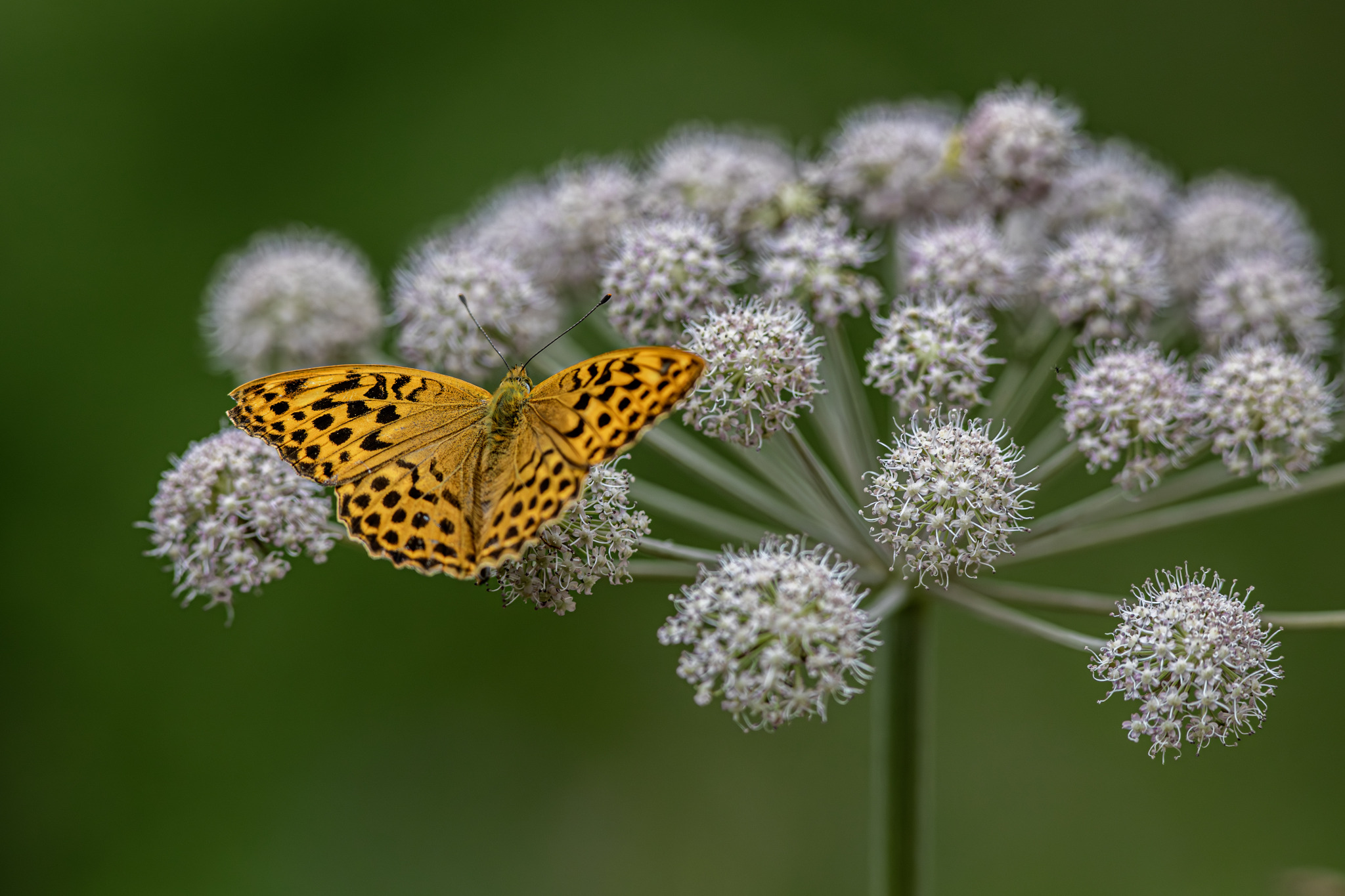The Silver-washed Fritillary (Argynnis paphia) is a magnificent species of butterfly belonging to the family Nymphalidae. Here’s a detailed description:
- Appearance: The Silver-washed Fritillary is a large and striking butterfly with a wingspan ranging from 54 to 70 millimeters. It has bright orange wings with prominent black markings, including a series of bold spots and lines along the edges. The underside of the wings is paler and marked with silver streaks, giving the species its name. Adult males typically have brighter orange coloration and narrower black markings compared to females.
- Habitat: Silver-washed Fritillaries are commonly found in woodland habitats, including broadleaf forests, clearings, and woodland edges. They have a preference for areas with abundant flowering plants, especially those with nectar-rich flowers such as brambles, thistles, and knapweeds.
- Range: This butterfly species is native to various parts of Europe, including the British Isles, Scandinavia, Central Europe, and extending into Asia. It is widespread within its range and can be found in suitable habitats across different countries.
- Behavior: Silver-washed Fritillaries are strong and fast fliers, often seen gliding gracefully among the trees or soaring high above the canopy. They have a distinctive flight pattern characterized by rapid wing beats interspersed with periods of gliding. Adults feed primarily on flower nectar, using their long proboscis to reach deep into the floral tubes.
- Life Cycle: The Silver-washed Fritillary undergoes a complete metamorphosis, progressing through egg, larva (caterpillar), pupa (chrysalis), and adult stages. The caterpillars feed on the leaves of various species of violets (Viola spp.), while the adults primarily feed on flower nectar.
- Conservation: While the Silver-washed Fritillary is not considered globally threatened, it may face localized threats due to habitat loss, fragmentation, and changes in land use. Conservation efforts aimed at preserving and restoring woodland habitats, including the planting of native flowering plants and maintaining suitable larval host plants, can benefit not only the Silver-washed Fritillary but also other butterfly species.
The Silver-washed Fritillary is admired by enthusiasts and researchers for its beauty, behavior, and ecological importance as a pollinator in woodland ecosystems. Understanding its habitat requirements and conservation needs is crucial for ensuring its long-term survival.
Visited 894 times, 7 visit(s) today
Views: 1829
Subscribe to the newsletter:
